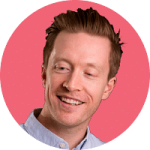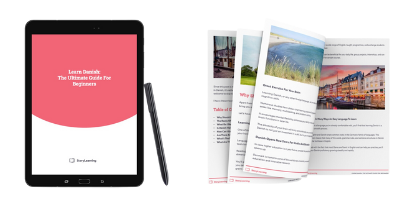Are you learning Arabic? Then I’m sure that one of the first things that you started learning is Arabic numbers.
Learning numbers is key to communicating in any language, and it’s no exception with Arabic.
Depending on the type of Arabic you’re learning, whether that be Modern Standard Arabic (MSA) or one of the dialects, there can be a lot of grammar rules that go with counting, making it one of the trickier things to master.
But that shouldn’t discourage you! The counting system in Arabic on its own is fascinating, and will give you deep insight into the unique features of the Arabic language.
And from experience, I can tell you that counting once you get to learning an Arabic dialect is pretty simple. So with that said, here’s your ultimate guide to learning Arabic numbers and how to count in Arabic
Pro Tip
By the way, if you want to learn Arabic through stories, not rules, then I have some great news for you!
My course, Arabic Uncovered, teaches you Arabic through the StoryLearning® method! It’s fun, easy, and effective! Get your free 7-day trial here.
Table of Contents
The “Real” Arabic Numbers: A Quick History Lesson
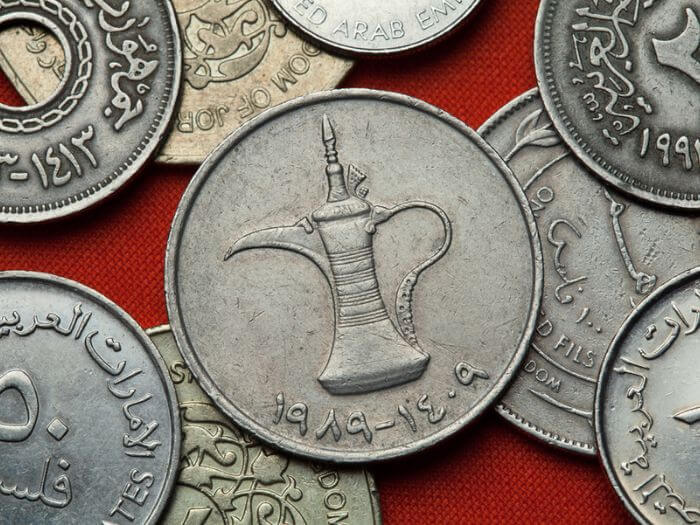
You’ve probably heard of ‘Arabic numerals’ before, seeing as even English numbers are also called ‘Arabic numerals’.
But ironically, the symbols that we use for numbers in English that we call ‘Arabic numerals’ (for example, 1, 2, 3, 4…) actually originate from India!
The reason we call them ‘Arabic numerals’ is that these symbols spread to the European continent via Arabic-speaking mathematicians in the Middle East during the 12th century.
That said, what makes this even more ironic is that there are actually a different set of symbols that are used for numbers in the Arabic script. So there are variations of these symbols used in Arabic and other languages that use the Arabic script like Farsi.
For the most part, these Arabic number symbols are completely different from the symbols that we call ‘Arabic numerals’, but there are some similarities. Take a look below!
| What We Call ‘Arabic Numerals’ | Actual Arabic Numerals in the Arabic Script |
| 0 | ٠ |
| 1 | ١ |
| 2 | ٢ |
| 3 | ٣ |
| 4 | ٤ |
| 5 | ٥ |
| 6 | ٦ |
| 7 | ٧ |
| 8 | ٨ |
| 9 | ٩ |
| 10 | ١٠ |
One thing to flag here is that even though the Arabic script is written from right to left, it switches to being written from left to right when you’re writing the numbers. For example:
24 = ٢٤ (not ٤٢)
100 = ١٠٠ (not ٠٠١)
566 = ٥٦٦ (not ٦٦٥)
Arabic Numbers: 0-10

Now that you know what Arabic numbers look like, it’s time to learn how they sound.
This will probably be one of the first things you learn in any Arabic class, seeing as knowing the numbers from 0-10 will go a long way, whether you’re ordering at a restaurant, buying groceries, or paying for a cab.
When I lived in Egypt, one of the first things I had to learn how to do was bargain at the market, and knowing the numbers was obviously helpful for that!
So with that said, here are the numbers in Arabic from 0-10. In case you haven’t already learned the Arabic alphabet, I’ve included both the Arabic spelling of the numbers as well as their transliterations in the English alphabet.
| English | Arabic (Arabic Script) | Arabic (English transliteration) |
| Zero | صفر | sifr |
| One | واحد | wa7id |
| Two | اثنين | ithnayn |
| Three | ثلاثة | thalaatha |
| Four | أربعة | 3arba3a |
| Five | خمسة | khamsa |
| Six | ستّة | sitta |
| Seven | سبعة | saba3a |
| Eight | ثمانية | thamaaniya |
| Nine | تسعة | tisa3a |
| Ten | عشرة | 3ashara |
Feeling confused about the pronunciation of some of the numbers used in the English transliterations above? Check out this Arabic chat alphabet guide to learn more.
Obviously, these numbers are the most important to know, and will be sure to go a long way in communicating in Arabic and getting the right number of cups of coffee at the coffehouse. But it’s still good to know how to count higher, which brings me to the next set of numbers.
Counting In Tens In Arabic
The best part about counting in tens in Arabic is that most of the tens are a variation of the original numbers from 1-10, where you add the sound “-een”/ “ين -” to the end of the word Take a look below:
| English | Arabic (Arabic script) | Arabic (English transliteration) |
| Twenty | عشرين | 3ashar-een |
| Thirty | ثلاثين | thalaath-een |
| Forty | أربعين | 3arba3-een |
| Fifty | خمسين | khams-een |
| Sixty | ستّين | sitt-een |
| Seventy | سبعين | saba3-een |
| Eighty | ثمانين | thamaan-een |
| Ninety | تسعين | tisa3-een |
That said, there are a couple of pointers to keep in mind.
First, you might have noticed that the word “twenty” is a bit different from the rest. That’s because one of the unique features of Arabic is that there are singular, plural, and dual forms of words.
What does this mean in practice? It means that 3ashareen / عشرين (twenty) is actually the dual form of the word “ten”, making it “twenty”.
Pretty cool, right? Read on to learn more about the grammar fundamentals for counting in Arabic.
Another thing to keep in mind is that in Modern Standard Arabic (MSA), the “-een”/ “ين -” ending can sometimes show up as “-un” / “ون -” because of the rules of I’a3rab / اعراب, a system of using case endings at the end of words to express meaning.
For example, khamseen / خمسين might also appear as khamsun / خمسون.
The good news though is that this is something that is more important when reading Arabic or writing it. So you can safely assume that you won’t be using this on a regular basis when speaking.
Still, it’s helpful to know so that you don’t feel thrown off in case you come across it when following the StoryLearning method and reading short stories in Arabic.

Arabic Numbers: 11-99
For the most part, counting from 11 to 99 in Arabic is pretty simple once you know the basic numbers from 1 to 10 and how to count in tens in Arabic. It’s simply a matter of putting the two together.
For starters, here’s how you can count from 11 to 20.
| English | Arabic (Arabic script) | Arabic (English transliteration) |
| Eleven | أحد عشر | Ahad 3ashar |
| Twelve | اثنان عشر | Ithnan 3ashar |
| Thirteen | ثلاثة عشر | Thalaathat 3ashar |
| Fourteen | أربعة عشر | Arba3at 3ashar |
| Fifteen | خمسة عشر | Khamsat 3ashar |
| Sixteen | ستّة عشر | Sittat 3ashar |
| Seventeen | سبعة عشر | Saba3at 3ashar |
| Eighteen | ثمانية عشر | Thamanyat 3ashar |
| Nineteen | تسعة عشر | Tisa3at 3ashar |
| Twenty | عشرين | 3ashareen |
From 20 and beyond, all you need to do is say the second digit of a number in English, the word in Arabic for “and” (wa / و), and then the first digit of a number in English.
For example:
- 32 / ٣٢ = ithnayn wa thalaatheen / اثنين و ثلاثين (two and thirty)
- 45 / ٤٥ = khamsa wa arba3aeen / خمسة و أربعين (five and forty)
- 67 / ٦٧ = saba3a wa sitteen / سبعة و ستّين (seven and sixty)
- 89 / ٨٩ = tisa3a wa thamaaneen / تسعة و ثمانين (nine and eighty)
Arabic Numbers: From 100 And Beyond

Once you get to 100, there are a couple more Arabic numbers that would be helpful to know. Some of the currencies in the Arabic-speaking world have very high values, which means that knowing the numbers higher than 100 in Arabic is a must.
Even if you’re traveling in an Arabic-speaking country that doesn’t have a very high currency, it can still be useful to know the numbers above 100. For example, if you’re travelling with a kid who's bored of sitting in a car, then it can be a good activity to try counting to 1,000!
Here are some of the most important counters from 100 to 1,000 in Arabic:
| English | Arabic (Arabic script) | Arabic (English transliteration) |
| One hundred | مائة | mi’a |
| Two hundred | مائتين | mi’ateyn |
| Three hundred | ثلاثمئة | thalathmi’a |
| Four hundred | أربعمئة | arba3ami’a |
| Five hundred | خمسمئة | khamsmi’a |
| Six hundred | ستمئة | sittmi’a |
| Seven hundred | سبعمئة | saba3ami’a |
| Eight hundred | ثمانمئة | thamaanmi’a |
| Nine hundred | تسعمئة | tisa3ami’a |
| One thousand | ألف | Alef |
The same logic that you use for counting multiples of 100 applies to counting multiples of 1,000, from 1,000 and beyond. For example:
- 2,000 / ٢٠٠٠ = Alfeyn / ألفين
- 3,000 / ٣٠٠٠ = Thalaath al’aaf / ثلاثة الاف
- 11,000 / ١١٠٠٠ = Ahad 3ashar alfan / أحد عشر ألفا
- 100,000 / ١٠٠٠٠٠ = Mi’a alef / مئة ألف
Let’s say you’re trying to say a number like 123 / ١٢٣ or 1,225 / ١٢٢٥. To do this, you would start by counting the digits from left to right, and then follow the same rule for counting from 11 to 99. For example:
- 123 / ١٢٣ = Mi’a wa thalaatha wa 3ashreen / مئة و ثلاثة و عشرين (one-hundred and three and twenty)
- 411 / ٤١١ = Arba3a mi’a wa a7ad 3ashar / أربعمئة و أحد عشر (four-hundred and eleven)
- 1,225 / ١٢٢٥ = Alef wa mi’ateyn wa khamsa wa 3ashreen / ألف و مئتين و خمسة و عشرين (one-thousand and two-hundred and five and twenty)
Last but not least, it’s worth knowing how to say “million” or “billion”. In Arabic, the word for “million” is the same as in English: milyon / مليون, while “billion” is milyar / مليار.
Grammar Fundamentals For Counting In Arabic

If you’ve taken an Arabic class for Modern Standard or Classical Arabic already and numbers were the topic of the day, then there’s a pretty good chance that you were as confused as I was in my first class on Arabic numbers.
With full disclosure, let me say that when I started learning Arabic, I found that the grammar for counting and numbers in Modern Standard Arabic to be one of the trickiest things.
Here’s why – depending on the number in question, Arabic numbers sometimes function as nouns, while other times, they function as adjectives.
This means that the rules for how you conjugate numbers in Arabic are not consistent, and it comes down to memorizing the rules, whether it be the rules for masculine/feminine nouns or singular/dual/plural words.
Take for example the number “1”. In Arabic, the number “1” functions as an adjective, which means that when you’re counting an object (let’s use “boy” and “girl” as the examples here), you would conjugate the number to the gender of the noun:
- Walad wahid / ولد واحد (one boy)
- Bint wahida / بنت واحدة (one girl)
The number “2” also acts as an adjective, but because Arabic has a dual form for nouns and verbs, you would say:
- Waladan ithnan / ولدان اثنان OR Waladeyn ithnayn / ولدين اثنين (two boys)
- Bintan ithnan / بنتان اثنان OR Binteyn ithnayn / بنتين اثنين (two girls)
When you get to the numbers 3-10, the nouns take on the plural form of the word. This might be simple enough to remember, but then in writing, the number has to take on the opposite gender of the noun. For example:
- Thalaatha wulud / ثلاثة ولد (three boys)
- Khams banat / خمس بنات (five girls)
The rules go on and on, and amazingly enough, get even more complex from there. For example, between the numbers 11-99, you don’t use the plural form of the word, and instead use the singular.
After reading all of this, you might be wondering whether any of this is relevant. The answer? It really depends on you and your Arabic speaking goals.
For instance, if you’re trying to master Modern Standard Arabic and become fluent in reading and writing, then it’ll be important to know all of these rules and you’ll want to invest more time in mastering them.
But if your goal is to speak fluently in one of the Arabic dialects, then you’ll likely find that a lot of these rules are thrown out the window. For instance, the Levantine dialect rarely uses the dual form for counting.
What I will suggest though is that when you do start learning new words in Arabic, it’ll go a long way to invest in learning both the singular and plural forms of words from the outset.
That’s because Arabic has a root system, which means that there often isn’t a single rule that you can follow to make words plural like you would follow in English.
In English for instance, in most cases, all you do is add “-s” to an end of a word to make the word plural.
Because of this, it can be helpful to memorise the plural form of words when you learn new vocabulary.
Arabic Numbers In Daily Life: Giving Your Phone Number

Once you know the base numbers, there are lots of different things that you can start communicating in daily life. Giving your telephone number to new friends is one of them!
To ask someone what their phone number is in MSA, you can say:
- Ma huwa raqam telefonak/ek? / ما هو رقم تلفونك؟ (What’s your phone number?)
To answer, all you need to do is say each number one after the other. Easy enough! For example, if your number is 567-465-534, then you just need to say each individual number in Arabic, starting from “5” and ending with “4”:
Khamsa sitta saba3a – arba3a sitta khamsa – khamsa thalaatha arba3a / *خمسة
ستّة سبعة – أربعة ستّة خمسة – خمسة ثلاثة أربعة
The only catch is that the way you might ask the question might change depending on the dialect. For instance, in Egyptian or Levantine Arabic, you would want to say Shoo raqam telefonak? / شو رقم تلفونك؟ , with Shoo / شو meaning “what”.
Arabic Numbers In Daily Life: Saying Prices
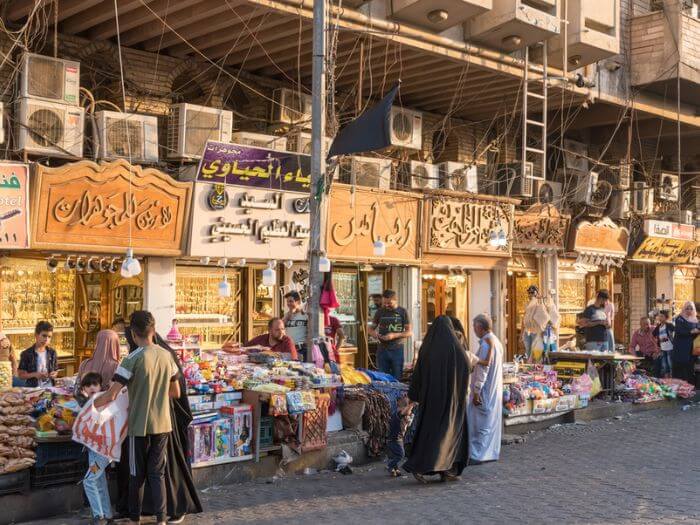
Likewise, you can also use Arabic numbers to ask the prices of different items at a store. To ask for the price of something, all you need to say is:
- Kam hatha/hathi? كم هذا / هذه ؟ (How much is this?)
In response, you’ll probably hear a vendor say the price by saying the number first and then the currency of the country you’re in, whether it be the Dinar, Egyptian Pound, or a currency for a different country. For instance:
- Khamsa Dinar / خمسة دينار (Five dinars)
- Sitta wa 3ashreen Shekel / ستّة و عشرين شيكل (Twenty-six Shekels)
Ordinal Numbers In Arabic
Now that you’ve got the hang of the basic numbers, it’s time to shift gears and learn how to count using ordinal numbers.
Ordinal numbers are the numbers that come in a certain order within a set. For example, the words “first”, “second”, and “third” are all ordinal numbers in English.
As I mentioned earlier, Arabic numbers can take on a masculine or feminine form. The same rule applies for ordinal numbers. Here’s a simple breakdown of the ordinal numbers up through 10:
| English | Arabic (masculine) | Arabic (feminine) |
| First | Awwal / أوّل | ‘Uula / اولى |
| Second | Thani / ثاني | Thaniya / ثانية |
| Third | Thalith / ثالث | Thalitha / ثالثة |
| Fourth | Rabia3 / رابع | Rabia3a / رابعة |
| Fifth | Khamis / خامس | Khamisa / خامسة |
| Sixth | Sadis / سادس | Sadisa / سادسة |
| Seventh | Saba3 / سابع | Saba3a / سابعة |
| Eighth | Thamin / ثامن | Thamina / ثامنة |
| Ninth | Taasia3 / تاسع | Taasia3a / تاسعة |
| Tenth | 3ashir / عاشر | 3ashira / عاشرة |
Unlike English where the ordinal number comes before the word it is describing (for example, “first child”), ordinal numbers in Arabic always come after the word they're describing. Here are a few examples to get you started:
- Al-sayyara al-’uula / السيارة الاولى (The first car)
- Marra thaniya / مرّة ثانية (Second time)
- Al-sa3a al-thamina (Eight o’clock)
The last example brings me to the next topic – telling the time.
How To Tell The Time In Arabic

Once you know the ordinal numbers, it isn’t a far stretch to start telling the time in Arabic. That’s because to tell the time in Arabic, all you really need to know is the ordinal numbers!
For starters, if you want to ask someone for the time, all you need to say is:
- Kam al-sa3a? / كم الساعة؟ (What's the time?)
But just like when you give your phone number or ask for the price of something, the exact question you’ll ask can depend on the dialect you are learning. In Levantine Arabic for example, it’s more common to ask ‘adeysh al-sa3a? / قديش الساعة؟ (What time is it?).
Fortunately, the responses to the question are generally the same across dialects. Here are a few examples:
- Al-sa3a al-thamina / الساعة الثامنة (Eight o’clock)
- Al-sa3a al-thaniya / الساعة الثانية (Two o’clock)
- Al-sa3a al-wahida / الساعة الواحدة (One o’clock)
- Al-sa3a al-Hadiya 3ashara / الساعة الحادية العشرة (Eleven o’clock)
- Al-sa3a al-Thaniya 3ashara / الساعة الثانية العشرة(Twelve o’clock)
It’s also helpful to know how to say half past or a quarter past the hour. The word for “half” in Arabic is NuSf / نصف, while “quarter” is ruba3a / ربع.
There’s also a specific word in Arabic for “one-third” (thulth / ثلث ) which you can use for expressing “twenty minutes”. Here’s how you can express the time using these words:
- Al-sa3a al-thalitha wa nuSf / الساعة الثالثة و النصف (The hour is three and a half (3:30))
- ِAl-sa3a al-khamisa wa ruba3a / الساعة الخامسة و الربع (The hour is five and a quarter (5:15))
- Al-sa3a al-sadisa ila thulth / الساعة السادسة الا الثلث (The hour is six minus twenty (5:40))
Do Arabic Dialects Matter When It Comes To Arabic Numbers?

After reading through all of this, you may be wondering whether the dialects matter when it comes to using numbers in Arabic.
For the most part, whether you’re speaking Egyptian Arabic, Moroccan Arabic, or any other dialect, the base numbers themselves are pretty constant throughout. That said, there are some exceptions.
For example, to say “two” in Moroccan Arabic, you say jooj / جوج instead of ithnayn / اثنين.
Can you imagine how confused I felt when I traveled to Morocco for the first time? I was completely caught by surprise when people started using the word jooj / جوج!
Also, the different pronunciation rules for dialects still do apply when counting, meaning that even though the numbers themselves are the same, the pronunciation might be different depending on the dialect you're speaking.
For example, some dialects (like the Egyptian dialect) don’t have the soft “th” sound and instead replace this with the “s” sound, so you might hear the word for “eight” (thamaniya / ثمانية ) as samaniya.
The best news though is that like I mentioned before, a lot of the complex grammar rules that come with MSA are irrelevant when you're speaking in a dialect. And the dialect tends to simplify the way you would use numbers.
For instance, if you want to say “It’s six o’clock” in Levantine Arabic, you would only need to say Al-sa3a sitta / الساعة ستّة (The time is six) without having to say the time as an ordinal number (Al-sa3a al-sadisa / الساعة السادسة).
At the end of the day, the base numbers from 1 to 10 can get you a long way in communicating in Arabic. So mastering even just the first ten numbers can help you to start speaking on the streets.
Keep Practicing Arabic Numbers!

There you have it! Congratulations for getting through the ultimate guide to learning Arabic numbers.
Even if you don’t feel like you’ve fully digested all the different rules that come with Arabic numbers, that’s okay! It doesn’t matter if it takes a little extra time to learn the fundamentals of counting in Arabic.
The most important thing is to not overthink the rules. After all, the most complex rules with numbers are not hugely important when it comes to speaking in any one of the Arabic dialects.
By the way, one of the best ways to start understanding and using Arabic numbers in daily life is by reading and listening to how they’re used in stories.
Luckily, my course Arabic Uncovered uses the StoryLearning® method, where you learn Arabic through an exciting and original story. You get a chance to see them in written form and hear the spoken in the dialect of your choice. Get your free 7-day trial of the course here.
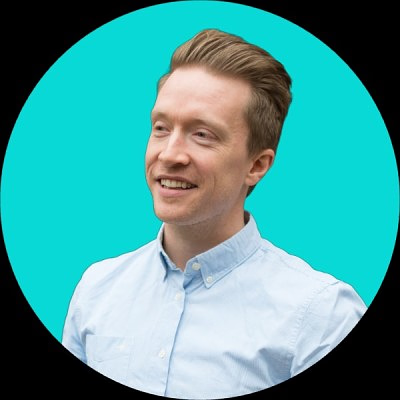
Olly Richards
Creator of the StoryLearning® Method
Olly Richards is a renowned polyglot and language learning expert with over 15 years of experience teaching millions through his innovative StoryLearning® method. He is the creator of StoryLearning, one of the world's largest language learning blogs with 500,000+ monthly readers.
Olly has authored 30+ language learning books and courses, including the bestselling "Short Stories" series published by Teach Yourself.
When not developing new teaching methods, Richards practices what he preaches—he speaks 8 languages fluently and continues learning new ones through his own methodology.

